You found our list of the best change management books.
Change management books teach managers to lead transformations within organizations or guide employees on workplace changes. These books include topics such as organizational psychology, Agile methodology, and leadership best practices. These books are for CEOs, managers, entrepreneurs and other business leaders.
These books are similar to project management books, books on management, books on business innovation, and training and development books. These books can help your foresee and manage workplace trends.
This list contains:
- the best books on change management
- organizational change books
- managing change books
- change management textbooks
Here is the list!
List of change management books
From recent hits to change management classics, here is a list of the best books for leading organizational change.
1. Managing Transitions: Making the Most of Change by William Bridges and Susan Bridges
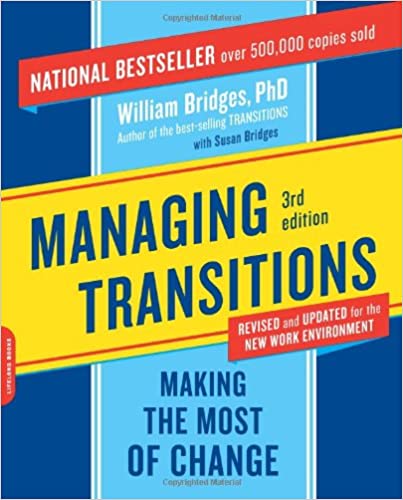
Managing Transitions is one of the most popular organizational change management books in the genre. Authors William and Susan Bridges tackle the psychological aspects of organizational transformation, coaching readers in the best ways to present and prepare for transitions. The methods frame transformation as an opportunity and encourage workers to embrace change. Managing Transitions covers topics such as initial resistance, nonstop change, and transition monitoring, prompting leaders to examine the adjustment from multiple perspectives.
Notable Quote: “Endings occur more easily if people can take a bit of the past with them. You are trying to disengage people from it, not stamp it out like an infection. And in particular, you don’t want to make people feel blamed for having been part of it.”
Buy Managing Transitions: Making the Most of Change.
2. Our Iceberg Is Melting: Changing and Succeeding Under Any Conditions by John Kotter and Holger Rathgeber
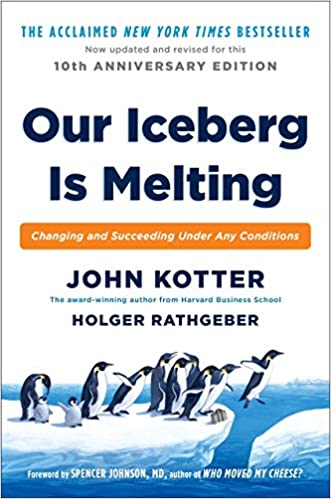
Our Iceberg is Melting is one of the most-often recommended change in the workplace books. John Kotter illustrates his methods by using the ongoing metaphor of a colony of penguins preparing to move to a new home, making concepts of corporate strategy relatable and easy to understand. Our Iceberg is Melting breaks the transition process into eight stages and steps, providing an entertaining yet actionable guide to managing change. Kotter has written several other books on change management, including Leading Change, A Sense of Urgency, and Heart of Change.
Notable Quote: “Empower Others to Act. Remove as many barriers as possible so that those who want to make the vision a reality can do so. Encourage others to remove barriers and make true innovation happen.”
Want some free team building tools?
$49 value (100% free)
- 100+ fully tested icebreaker questions
- 24+ themed Bingo generators
- 5+ PDFs (including the 8% Rule)
- 2024 team building calendar
- and more...

Enter your email for instant access
3. Change (the) Management: Why We as Leaders Must Change for the Change to Last by Al Comeaux
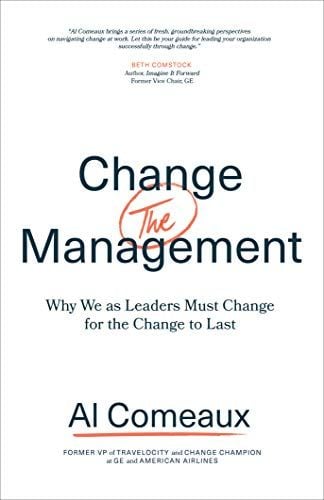
Change (the) Management is one of the best new leading organizational change books. Al Comeaux argues that two thirds of organizational change initiatives fail because the campaigns are superficial and fail to meaningfully communicate and connect with the workforce. For change to be meaningful and lasting, leaders must engage employees’ on an emotional level and model ideal attitudes and actions. First, managers must examine their own psychologies and remove misconceptions and barriers to improvement. Only then will leaders be ready to convince colleagues to adjust to new standards.
Notable Quote: “The reality is that if we want successful, lasting change, we should not try to get people to change their behaviors….Instead, what we must do is to get people to want to change their behaviors.”
4. HBR’s 10 Must Reads on Change Management by the Harvard Business Review
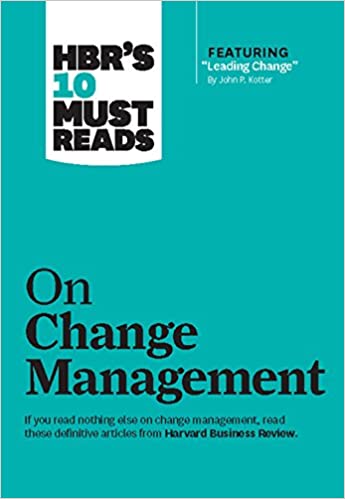
While many change management books target specific facets of organizational evolution, HBR’s 10 Must Reads on Change Management runs the gamut of topics. This anthology is a “greatest hits” of change management, and is one of the best change management books for beginners. The collection gathers the best transition management essays from past issues of The Harvard Business Review, like “Leading Change: Why Transformation Efforts Fail,” “Radical Change, the Quiet Way,” and “Leading Change When Business Is Good.” The book teaches skills such as concentrating resources, establishing a sense of urgency, and overcoming complacency.
Notable Quote: “Technical problems, while often challenging, can be solved applying existing know-how and the organization’s current problem-solving processes. Adaptive problems resist these kinds of solutions because they require individuals throughout the organization to alter their ways; as the people themselves are the problem, the solution lies with them.”
Buy HBR’s 10 Must Reads on Change Management.
5. Who Moved My Cheese by Spencer Johnson and Kenneth Blanchard
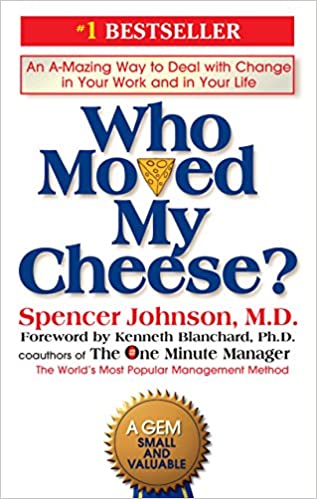
Who Moved My Cheese is one of the change management classics that pops up again and again on lists of the best change management books for leaders and employees alike. Using the allegory of mice running through a maze, the authors assert that the most important factor to dealing with change is not the nature of the transformation, but rather, the attitudes of the players involved. Who Moved My Cheese teaches readers to adopt more productive mindsets and react to change with grace, rising to the challenge instead of exhibiting progress-halting fear or anger.
Notable Quote: “See what you’re doing wrong, laugh at it, change and do better.”
Buy Who Moved My Cheese.
6. Leadershift (The 11 Essential Changes Every Leader Must Embrace) by John C. Maxwell
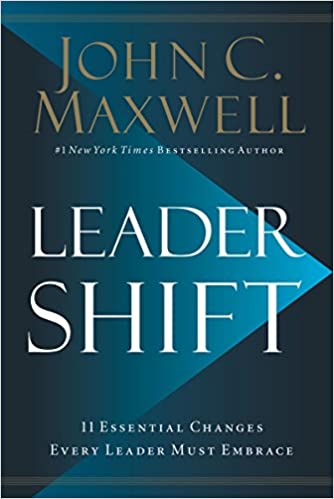
John Maxwell has written a variety of bestselling leadership books. In this work, he focuses on 11 critical shifts leaders need to make throughout their careers to drive meaningful change and growth. Leadershift outlines transformations such as the switch from pleasing people to challenging people, and the evolution from team uniformity to team diversification. By defining and illustrating each approach, Leadershift equips organizational heads to elicit employee support and spearhead essential change.
Notable Quote: “If others work for you, give your own time only to those who are willing to learn and grow.”
Buy Leadershift.
7. Doing Agile Right: Transformation Without Chaos by Darrell Rigby, Sarah Elk and Steve Berez
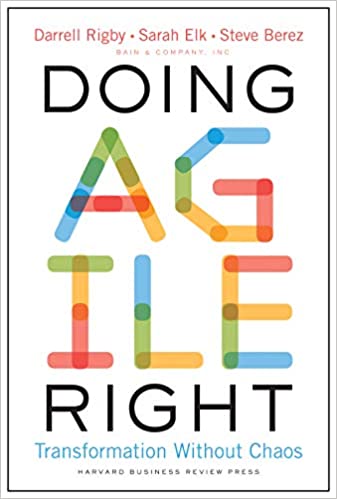
Agile is a project methodology derived from the software development world. The methodology favors lean and autonomous teams, continuous adaptation, constant improvement, flexibility, and customer collaboration. The approach enables speed and innovation, empowering employees to create and test new tactics on the fly instead of getting bogged down with rigid rules and strict systems. When done correctly, Agile prevents confusion and chaos. Doing Agile Right shows forward-thinking leaders how to reimagine and reorganize companies for optimal efficiency. The book shows practitioners how to find a happy medium between traditional systems and agile approaches. Doing Agile Right covers topics such as scaling, technology, budgeting, and people management.
Notable Quote: “In a truly agile enterprise, bureaucracy and innovation become partners. They create a system where both elements improve and where people in each camp collaborate to generate superior results.”
Buy Doing Agile Right.
8. Switch: How to Change Things When Change Is Hard by Chip Heath and Dan Heath

The human psyche presents one of the greatest hurdles to meaningful change. The battle between the rational mind and the emotional mind puts obstacles in the way of growth and improvement. Switch teaches readers how to harmonize between both ways of thinking and create positive patterns to achieve more impressive results. The book draws on stories and case studies to illustrate how to resist urges, build positive habits, and indulge both mindsets appropriately instead of denying one or the other. Though Switch centers on general psychology, it relies heavily on professional examples, making the book a great motivational workplace read.
Notable Quote: “A good change leader never thinks, “Why are these people acting so badly? They must be bad people.” A change leader thinks, “How can I set up a situation that brings out the good in these people?”
Buy Switch.
9. You’re It: Crisis, Change, and How to Lead When It Matters Most by Leonard J. Marcus, Eric J. McNulty, et al.
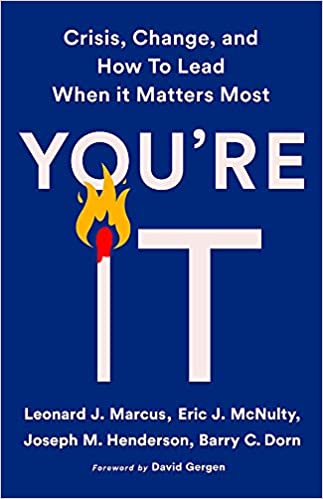
The last couple of decades have presented a slew of pressing issues and crises, including various recessions and financial turbulence, natural disasters, and a worldwide pandemic. These extenuating circumstances are difficult yet can inspire innovation and extraordinary performance. Adept leaders guide organizations through periods of rapid, unpredictable, and often stressful change with the type of methods described in You’re It instructs readers how to lead through crises. For example, by maintaining a calm composure and clear head to carefully assess difficult situations, choosing a pragmatic plan of action, inspiring confidence from your colleagues, and pivoting your business without giving workers whiplash.
Notable Quote: “Complexity is not something to be solved. It is not a condition that can be cured. You can’t make it go away. You can, however, navigate through it.”
Buy You’re It.
10. The Innovator’s Dilemma: When New Technologies Cause Great Firms to Fail (Management of Innovation and Change) by Clayton M. Christensen
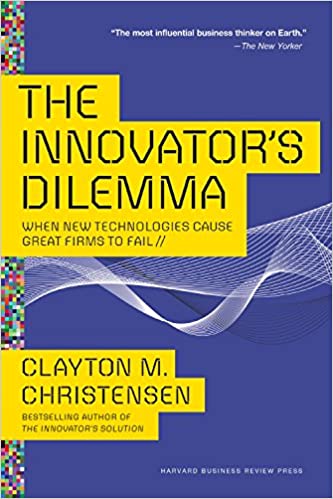
The Innovator’s Dilemma is one of the most highly-praised change management books of all time. Clayton Christensen chronicles revolutionary technologies’ effects on markets and advocates for embracing advancements at opportune times. The book suggests that successful, well-organized, industry-leading companies can lose their advantage if change resistant. The Innovator’s Dilemma teaches leaders to evaluate new technologies and gauge when to abandon tradition in favor of progress. This work is a handbook for disruptive innovation and guide navigating transformation.
Notable Quote: “Managers who confront disruptive technological change must be leaders, not followers, in commercializing disruptive technologies.”
11. Reinventing Organizations: A Guide to Creating Organizations Inspired by the Next Stage in Human Consciousness by by Frederic Laloux

Reinventing Organizations is inspired by historical paradigm shifts and employee engagement best practices. The book is a guide to re-imagining the workplace. The authors assert that poor management systems are to blame for a vast deal of modern workplace disillusionment and disengagement. Yet by restructuring the processes that guide organizations, leaders can reinvigorate the workforce and transform their companies. The book explores operational frameworks and shares stories to help leaders reinvent and revolutionize companies in ways that favor worker autonomy, true collaboration, and positive company culture.
Notable Quote: “When trust is extended, it breeds responsibility in return. Emulation and peer pressure regulates the system better than hierarchy ever could.”
Buy Reinventing Organizations.
12. Imagine It Forward: Courage, Creativity, and the Power of Change by by Beth Comstock and Tahl Raz
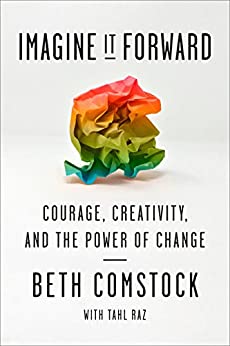
Imagine It Forward examines organizational transformation from the viewpoint of creativity, reinvention, and imagination. The author’s call to action is for readers to initiate change before trends or crises necessitate a switch. Beth Comstock was a marketing executive at companies like GE and NBC. The author draws on this experience to illustrate the role of risk taking and storytelling in driving change on an organizational level. Imagine It Forward presents change management as an art and creative endeavor that requires both discipline and ingenuity.
Notable Quote: “Traditional business strategy too often does not bother to create a story or narrative about its actions for its employees and the world to gather around. For the strategy to become reality, people need to see themselves in the story and then take action to make the story happen.”
Buy Imagine It Forward.
Conclusion
Change is both difficult and constant. In an ever evolving global climate, leaders need to practice sound judgment and adapt to new situations and development with good judgment and grace.
The books on change management on this list prepare managers and employees alike to evaluate and implement new systems with strategy, dexterity, and flexibility, creating work environments conducive to innovation and resilience.
For more reading suggestions, check out our posts on HR books, organizational behavior books or books for CEOs.
